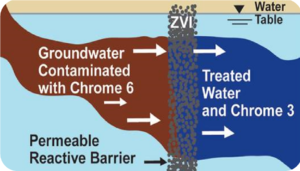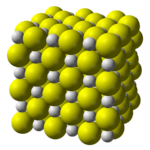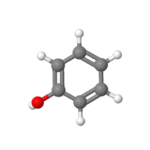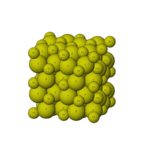Create reactive reducing zones with In-Situ Chemical Reduction (ISCR).
An abiotic process that typically occurs under extremely electronegative conditions, in-situ chemical reduction (ISCR) has similar results as anaerobic enhanced bioremediation. During remediation, ISCR creates reactive reducing zones where direct chemical contact is not required. Therefore, it is ideal for treating large plumes; however, it is best considered as a part of a zoned treatment in combination with other remediation.
The use of ISCR is preferred with lower concentration plumes, it is more pH dependent, and the natural geochemistry is more of a factor in its effectiveness. ISCR can be effective on chlorinated ethenes, metals, explosives, and a variety of other compounds. Common reductants include zero valent iron (ZVI), nano-ZVI, metal sulfides, polysulfides, and other compounds.
Chemical reductants may be injected into the subsurface via ISCR or blended into the soil matrix (soil blending). Advantages over enhanced bioremediation includes speed of reaction and greater likelihood of success due to the lack of reliance on microbial processes alone. Chemical reduction is typically slower than chemical oxidation, where molecular bonds are broken versus substitution of electrons on the carbon chain (i.e. hydrogen ions for chlorine ions). ISCR treatments may be performed by direct plume area injection or more commonly by creating a liquid or solid phase permeable reactive barrier (PRB) along the down-gradient plume extent.
 PRB examples for ISCR
PRB examples for ISCR
- ZVI
- nZVI
- Iron sulfides
- Polysulfides
- Dithionates
Common chemical reductants





Ready to close your site?
Eden Remediation can help you close a site with ISCR. Contact us to get started with these suggestions:
- Start with a good estimate of cleanup mass and volume
- Choose the right chemistry and application (ISCO / ISCR)
- Treatability testing may be beneficial
- Design a “best-fit” strategy (“zoned” treatment approach)
